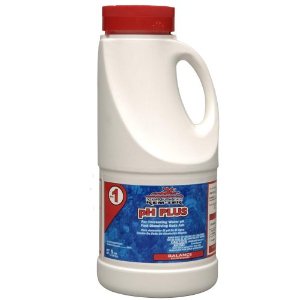How do you use the soda ash solution with drip dyeing, sprinkle dyeing, spray dyeing, and fabric painting methods when using Procion dye?
Name: Michelle
Country or region: Oklahoma , USA
Message: How do you use the soda ash solution with the drip dyeing, sprinkle dyeing, spray dyeing, and fabric painting with dye methods when using Procion dye? I could not find this information in the instructional areas for these types of dyeing, nor in the gallery discriptions. I have found that I absolutely LOVE this dye! Thanks for all your help, and feel free to include the question and answer on your blog!
It's simpler than you've been thinking! Just presoak the fabric in soda ash solution, exactly as you would do for tie-dyeing. I usually use one cup of soda ash per gallon of water (that's 20 grams per liter), though as little as as much soda ash will still work. After fifteen minutes, or long enough for the soda ash to penetrate into the center of each fiber, use gloved hands to remove the fabric from the bucket, squeeze out as much liquid as you easily can, and spread it out on your work surface, ready for the dye. This is step 5 on the "How to Hand Dye with Procion MX Dye" page.
For each of the methods you mention, I like to use the fabric still damp from the soda ash solution. Another option is to line-dry the fabric with the soda ash in it. The soda ash powder will stay in the fabric even after it dries. It can be used for tie-dyeing, spray painting with dye, and directly painting the dye on to the fabric. (Obviously there's no point in using dry fabric with the dry dye powder technique, since some moisture is needed for any dye reaction to occur.) The results with dried-in soda ash are a little different than using damp fabric, since the dye tends to move less on the fabric when there is less moisture present.
If you choose to dry the soda ash into the fabric, don't use a clothes dryer for the drying step. For one thing, it will make a mess of your dryer; you don't want to leave soda ash in the drum to get on the next load of ordinary laundry that you dry, so you'd have to scrub out the entire inside surface of the clothes dryer. Furthermore, it can be dangerous. More than one dyer has reported a fire in the clothes dryers as the result of machine drying fabric with soda ash in it; apparently cotton fabric is much more prone to catch on fire when it is at a high pH. (There is no risk in machine drying fabric whose soda ash has been rinsed out.) So, it's important to use line-drying instead of machine drying. Be careful if you hang the soda-ash-wet fabric on a line over your lawn, though, dripping on to your grass or plantings, because exposure to too much of the sodium in soda ash is not good for plants.
For drip dyeing, spray dye, fabric painting, and tie-dyeing, it is also possible to add the soda ash to the dye mixture just before applying it to dry, unsoaked fabric, or to fabric that's been dampened with a little plain water. The drawback is that the dye in the mixtures will be significantly used up an hour or so after you add the soda ash to it, so it will produce weaker and weaker colors. If you want to add soda ash directly to your dye mixtures, use 1 teaspoon of soda ash for one 16-ounce bottle of dye (containing two to four tablespoons of dye powder).
When painting the dye directly on to the presoaked fabric, whether it's wet or dry, be careful to pour out just enougb dye to use in the next hour or so. If you use a paintbrush or other tool, such as a sponge, you will pick up some soda ash from your fabric each time that you touch it. This is true whether you use wet or dry pre-soaked fabric. As the soda ash is carried back to your dye container on your brush, enough will get into the dye to make it start to go bad. A dye mixture that's kept in a separate bottle, so that it does not get contaminated with soda ash, should stay good for at least a week.
(Please help support this web site. Thank you.)
(Please help support this web site. Thank you.)
Posted: Tuesday - October 25, 2011 at 10:57 AM
Follow this blog on twitter here.
Quick Links
- All About Dyes & Dyeing Top -
- Top of this blog -
- FAQ -
- The Dye Forum -
- How to Tie Dye - How to Batik -
- Books - Toys - Plants -
- Top of this blog -
- FAQ -
- The Dye Forum -
- How to Tie Dye - How to Batik -
- Books - Toys - Plants -
More in this category:
- -
Statistics
Total entries in this blog:
Total entries in this category:
Published On: Aug 29, 2012 02:49 PM
Total entries in this category:
Published On: Aug 29, 2012 02:49 PM
